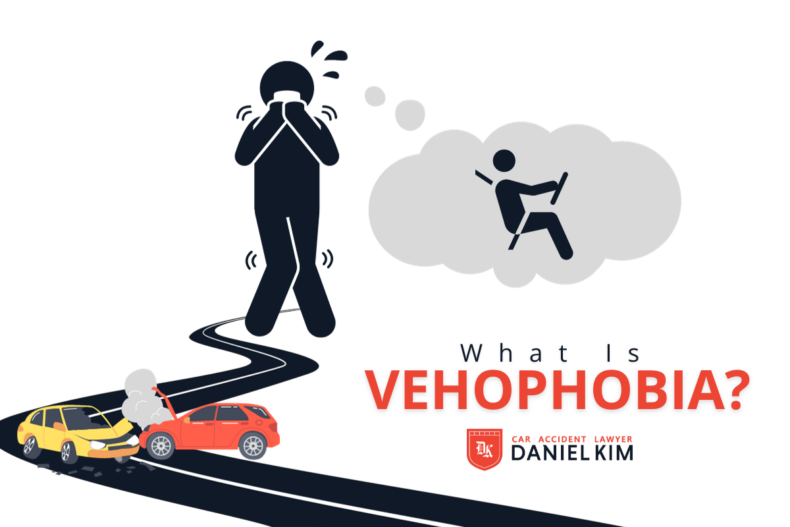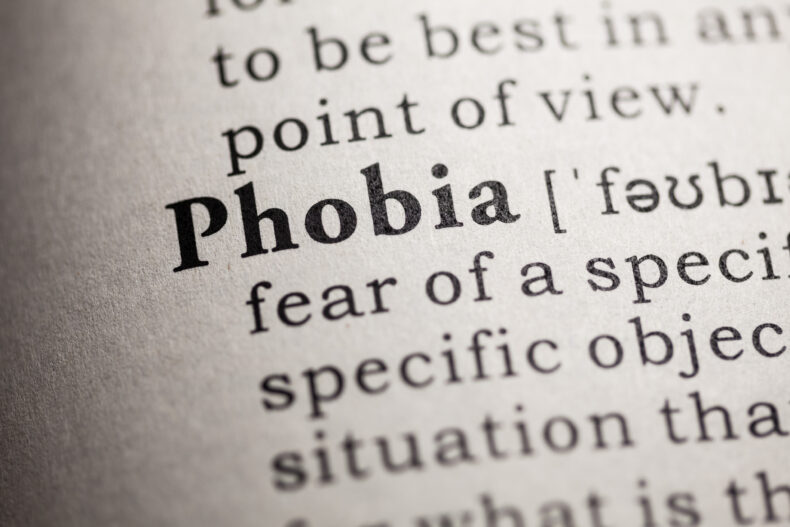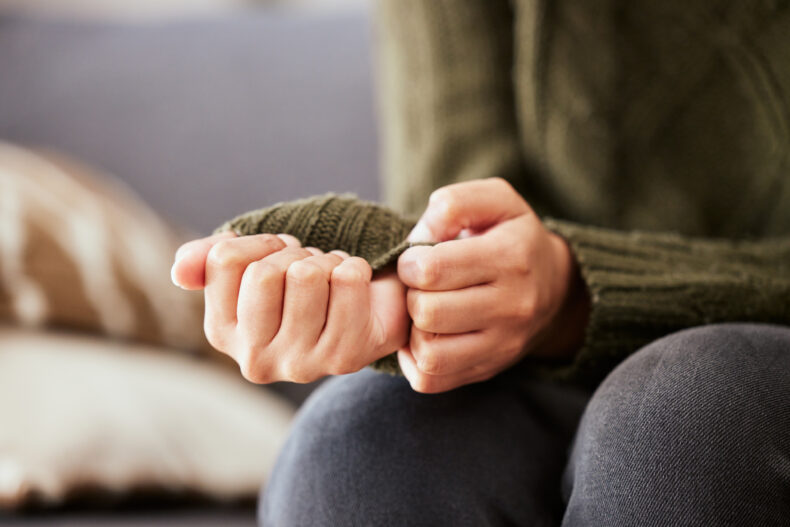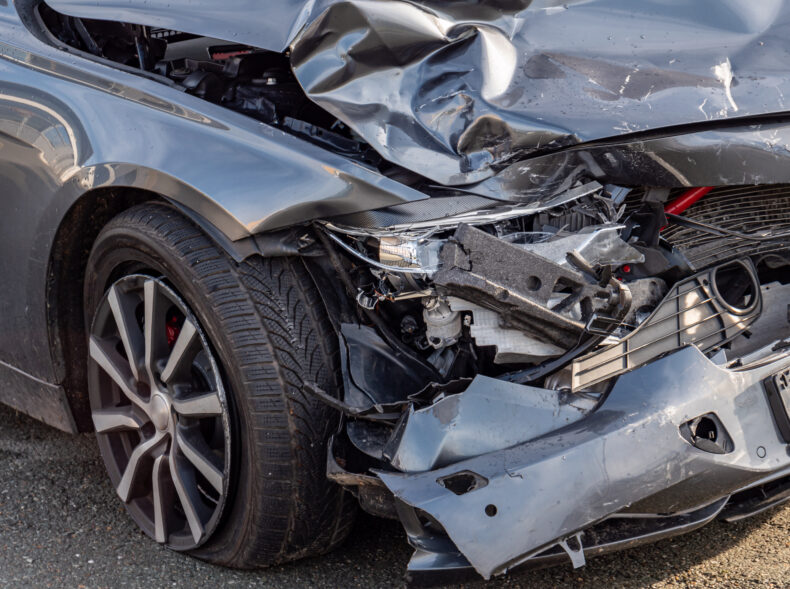Vehophobia: Causes, Symptoms, and Treatment

If you are a car accident survivor, you may experience fear and anxiety when you get back behind the wheel after your accident. This is completely normal. However, there is a more serious and crippling fear of driving that can follow after surviving or witnessing a serious motor vehicle accident: vehophobia.
If you believe you or a loved one is suffering from vehophobia after a motor vehicle accident, you may be eligible for financial compensation for your emotional trauma and other injuries. Call our Orange County car accident law firm for a free consultation today.
What is Vehophobia?
Vehophobia is the fear of driving. When someone suffers from vehophobia, they will do everything they can to avoid driving. They may use public transportation, rideshare services, or ask family and friends for rides.
In situations where they are forced to drive, they will experience an intense and irrational fear while behind the wheel. Vehophobia can seriously disrupt a person’s daily life and affect their personal relationships.
While the exact number of people who suffer from vehophobia is unclear, on average, 12.5% of Americans will experience one or more specific phobias. Car accidents can lead to a fear of driving as well as other psychological conditions, such as post-traumatic stress disorder (PTSD) and anxiety disorders.
It is important to know the difference between vehophobia and other similar phobias:
- Amaxophobia is the fear of riding in a vehicle.
- Hodophobia is the fear of traveling.
- Ochophobia is the fear of vehicles.
Causes of Vehophobia
The most common cause of vehophobia is being the victim of a serious car accident, whether as a driver or passenger. A traumatic event like a car accident can seriously affect a person’s mental and emotional health, leading to post-traumatic stress disorder (PTSD), anxiety, depression, or phobias. A person who has experienced a car accident may develop vehophobia as a way of avoiding the possibility of another accident or the painful memories associated with it.
More common causes of vehophobia include:
- Witnessing a car accident
- Seeing a loved one or another person killed in an accident
- Being involved in a road rage incident
- Driving in dangerous conditions like snow or heavy rain
- Growing up with parents or family members who were anxious or reckless while driving
- Seeing an animal run in front of or be hit by a vehicle
- Lack of driving experience driven by fear or anxiety
- Reading about bad accidents on the news or social media
Symptoms of Vehophobia
For someone with vehophobia, the thought of driving causes severe anxiety and debilitating fear. The symptoms of vehophobia are similar to anxiety symptoms and panic attacks. It is important to recognize the symptoms in order to seek treatment.
Common symptoms of vehophobia include:
- Panic attacks while driving
- Increased heart rate
- Trembling and shaking
- Shallow breathing
- Chest pain
- Sweating
- Nausea
- Tense muscles
- Excessive fear
- Avoiding driving or traveling by car
Treatment Options for Vehophobia
There is no “one size fits all” treatment for vehophobia. Oftentimes, patients require a mix of different treatment options to address their specific needs. Many people who experience anxiety behind the wheel will require the assistance of mental health services.
The following are some of the common ways to treat vehophobia:
Cognitive Behavioral Therapy
Cognitive behavioral therapy (CBT) and exposure therapy are two effective forms of treating phobias. CBT helps patients identify and challenge their negative thoughts and beliefs about driving. Through therapy sessions, patients learn problem-solving skills to cope with their phobia and develop more confidence in themselves.
Exposure therapy, which may include virtual reality exposure therapy (VRET), allows patients to safely practice driving in a safe and controlled way, using digital simulation technology. The goal of this type of therapy is to help patients overcome their fear and learn to cope with their anxiety.
Hypnotherapy
Hypnosis can help patients access their subconscious and put their painful memories into perspective. Hypnotherapy can also help patients relax, increase their confidence, and create positive visualizations of driving. Hypnotherapy can be done by a trained therapist or by using self-hypnosis techniques.
Medication
While no medication will cure someone of a phobia, prescription drugs can be prescribed to treat anxiety and other symptoms on a short-term basis. It is always recommended to consult with a doctor or mental health provider before starting medication. Some common types of medication used for anxiety disorders are anti-anxiety drugs, antidepressants, and beta-blockers.
Defensive Driving Courses
Defensive driving courses can help people with xenophobia feel more confident and improve their driving skills. Many people fear driving because they feel unprepared in a dangerous situation. Enrolling in a course can help someone reduce driving anxiety, understand the rules of the road, and build up their confidence.
Support Groups
Joining a support group, whether in person or online, can help someone suffering from vehophobia feel less alone. Support groups are a great way to connect with others who are dealing with similar difficult circumstances. Participants are encouraged to share their experiences and offer support for others. Support groups can also provide information, resources, and tips on how to cope with their phobia.
Compensation for Vehophobia and Other Serious Car Accident Injuries
If your car accident was caused by a negligent driver, business, or other entity, you may have grounds to seek compensation for your medical bills, pain and suffering, emotional trauma, and more.
You need to file a car accident claim proving that the other person acted negligently and caused your accident. A car accident lawsuit can include compensation for economic damages, such as medical bills and lost wages, and non-economic damages, which lack a specific monetary value. Vehophobia can be included as part of your damages, as well as other related losses such as:
- Pain and suffering
- Emotional distress
- Costs of medical treatment, including therapy
- Loss of enjoyment of life
- Physical injuries
Speak to an Experienced Car Accident Lawyer
Car accident trauma comes in many forms. If you are suffering from a car accident injury, the first thing you should do is talk to a medical professional and seek proper treatment. Then, consider consulting with a personal injury lawyer to learn about pursuing compensation. Hiring a car accident lawyer will bring accountability to the person who caused you harm.
The Law Offices of Daniel Kim is Southern California’s premier personal injury law firm dedicated to injured car accident victims and other motor vehicle accident victims.
We offer a completely free consultation to get to know you, ask about your accident, and determine the right course of action. Our compassionate legal team is ready to help you today.
CALL NOW




